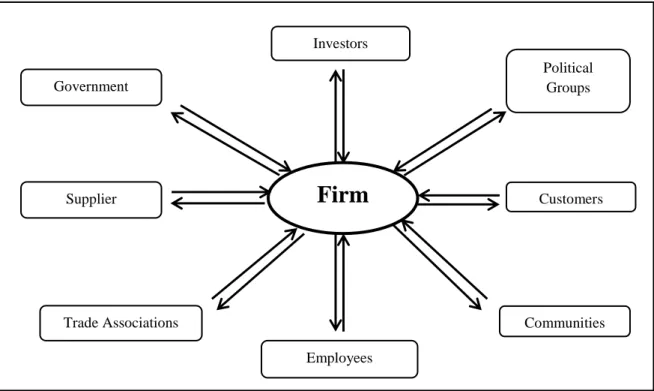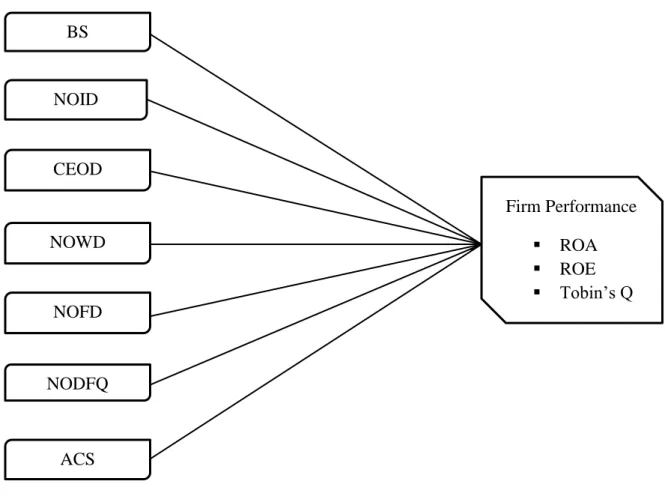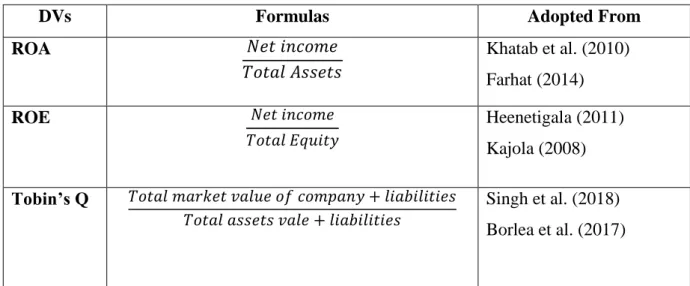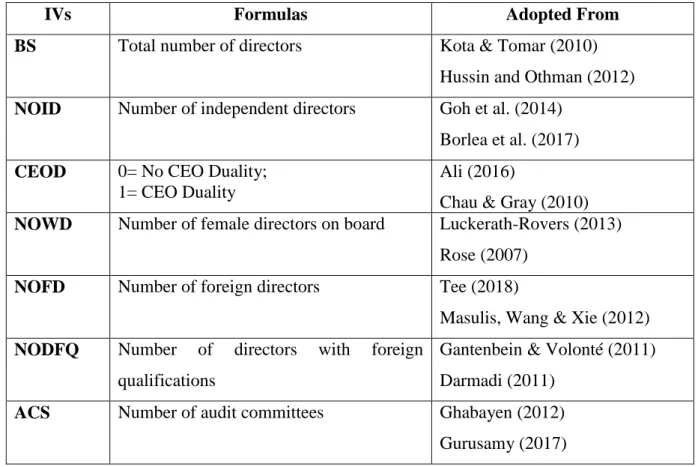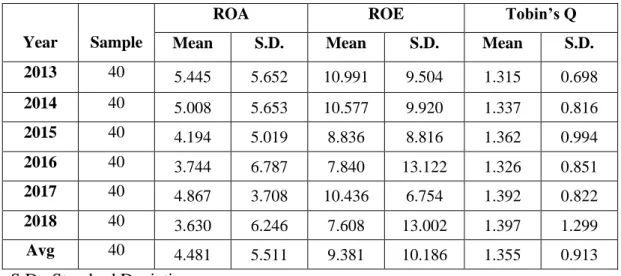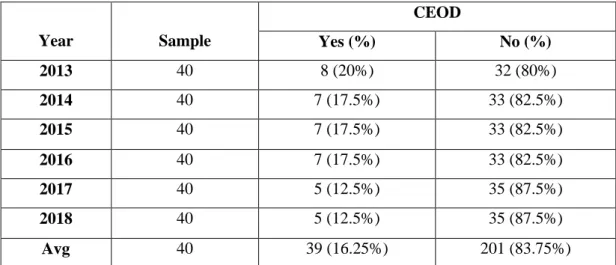This topic of this research is Globalization of the Boardroom among family-controlled companies listed on Bursa Malaysia- The effects of corporate governance on firm performance. This research aims to determine whether corporate governance affects firm performance among family-controlled listed companies on Bursa Malaysia with globalized boardroom after the implementation of Malaysia Code of Corporate Governance (MCCG) 2012 and The Code 2012. According to the panel data analysis, it was found that there is no significant effect between corporate governance oversight and firm listing of companies controlled by Bursa on a global board of Bursa.
Introduction
Research Background
The purpose of CG is to align the interests of individuals, corporations and society (Škare & Hasić, 2015). Therefore, international organizations encouraged each country to disseminate codes to have an international standard of CG (Otman, 2014). This research focuses on analyzing the effects of CG mechanisms such as board size (BS), number of independent directors (NOID), CEO duality (CEOD), number of women directors (NOWD), number of foreign directors (NOFD), number of directors with foreign qualifications (NODFQ) and audit committee size (ACS).
Problem Statement
Research Objectives
Research Questions
Significance of the Study
Chapter Layout
Introduction
Family-Controlled Companies
Globalized Boardroom
According to Walt and Ingley (2003), BOD referred to a collection of individuals with different competencies and skills who come together to perform monitoring and advisory functions in a company. The benefit of Foreign Independent Directors (FIDs) was that they could provide valuable international knowledge and information to companies. However, according to Masulis, Wang & Xie (2012), they claimed that FID tends to be less effective in the field of management compared to local directors.
Corporate Governance in Malaysia
It was stated that MCCG 2017 brought new major changes as it adopted the Comprehend, Apply and Report method (CARE approach), where it was clear in terms of the compliance method in MCCG 2012. It was believed that MCCG 2017 could allow a more flexible and adaptable application in business practices.
Review of Literature
Dependent Variables
- Return on Assets
- Return on Equity
- Tobin’s Q
From the shareholders' point of view, ROE has been recognized as one of the reliable measurements in the study of company performance (Johnson. Some previous research has shown that the results of the analysis of CG mechanisms with company performance have been mixed. Tobin's Q refers to the total market value of the company added to liabilities divided by the total book value of liabilities.
Independent Variables
- Board Size
- Number of Independent Directors
- CEO Duality
- Number of Women Directors
- Number of Foreign Directors
- Number of Directors with Foreign Qualifications
- Audit Committee Size
According to Norazian & Radiah (2012), CEO duality was found to have a significant effect on ROA firm performance. Research by Goh (2014) on family business firms found that CEO duality has a non-significant effect on the relationship with firm performance. According to Erhardt et al. 2003), they concluded that there was a significant effect between gender diversity and firm performance.
Theoretical Perspective of Corporate Governance
- Agency Theory
- Stewardship Theory
- Stakeholder Theory
- Resource Dependency Theory
In addition, independent directors who have control over management will look after the interests of shareholders and reduce agency problems. According to Davis et al. 1997), the goals of CG mechanisms are to "protect the interests of shareholders, reduce agency costs and ensure the alignment of the interests of the agent and the principal". According to Donaldson and Davis (1991), stewardship theory was developed as a model where senior executives (managers) conscientiously work in the best interests of the principals by acting as trustees of the organization.
The stewards will pay more attention to collective rather than individual goals as they believe that their personal needs will be fulfilled when their interests are aligned with the interests of the principals (Davis et al., 1997). Cultivating the process can increase a company's sustainability and ultimately become a competitive advantage for the company (Eddleston & . Kellermanns, 2007). According to Freeman (1984), a stakeholder is any group of people who can influence the activities of the company or be affected by the company's activities.
This theory emphasized the importance of balanced interests of the stakeholders for the company to create value (Gooyert, Rouwette, Kranenburg & Freeman, 2017). Thus, this has significantly increased managers' obligations from shareholders' interests to other stakeholders by expanding their network of relationships to serve multiple parties (Okiro, 2014). Moreover, Freeman (1999) stated that this group of the network is far more important compared to the relationship in agency theory.
Due to the internationalization of capital markets, CG is in a state of transition and results in the convergence of CG's shareholder value-based approach and CG's stakeholder concept towards sustainable business systems.

Research Framework
Introduction
Research Design
Data Collection Method
Secondary Data
Sampling Design
- Target Population
- Sampling Frame
- Sampling Element
- Sampling Technique
- Sampling Size
Most of the family-controlled companies included in "Family Control Companies in Bursa Malaysia" by Tan (2016) were being selected, except for seven companies with insufficient information. Annual cross-sectional data were used in the panel data analysis and resulted in 240 firms for the annual observations.
Research Instruments
Constructs Measurement
Origin of Construct
BS Total number of directors Kota & Tomar (2010) Hussin and Othman (2012) NOID Number of independent directors Goh et al.
Scale Measurement
Data Processing
Data Analysis
Descriptive Analysis
Inferential Analysis
- Panel Data Analysis
FEM was used to determine individual characteristics for each percept in the sample based on the intercept term while REM was based on the random error term. The main difference between FEM and REM was that FEM ignored the effect of time, but REM will capture the distinct characteristics of observations at different times. When deciding which effects model to use, the Hausman test should be performed.
The idea behind the Hausman test was that when the probability value (P-value) was greater than 0.05, REM was used unless the Hausman test rejected the null hypothesis (Studenmund, 2016).
Introduction
Descriptive Analysis
Dependent Variables
Independent Variables
Panel Data Analysis
ROA
- Random Effect Model of ROA
- Hausman Test for ROA
According to the formulated equation, it showed that BS and NODFQ have a positive effect on ROA, while NOID, CEOD, NOWD, NOFD and ACS have a negative effect on ROA. A random effect model was used to implement the ROA for the six-year period in this research. 4.53% of the variation in ROA can be explained by the variation in the seven IVs.
The Hausman test was performed to determine which regression would be the most appropriate among the Fixed Effect Model and the Random Effect Model. H0: Random Effect Model is the most appropriate model H1: Fixed Effect Model is the most appropriate model.
ROE
- Random Effect Model of ROE
- Hausman Test for ROE
According to the comparison formed, it showed that BS, NOFD and NODFQ have a positive effect with ROE while NOID, CEOD, NOWD and ACS have a negative effect on ROE. Random Effect Model was used to run the ROE for the six year period in this research. 7.45% of the variation in ROE can be explained by the variation in the seven IVs.
Cross-sectional random Hausman test was performed to decide which regression would be the most appropriate among the Fixed Effect Model and Random Effect Model.
Tobin’s Q
- Random Effect Model of Tobin’s Q
- Hausman Test for Tobin’s Q
According to the equation formed, it showed that BS, NOFD, NOWD, NOFD, NODFQ and ACS have a positive effect with Tobin's Q, while only CEOD had a negative effect with Tobin's Q. Random Effect Model was used to run the Tobin's Q over the six-year period in this study. 5.54% of the variation in Tobin's Q could be explained by the variation in the seven IVs.
Introduction
Hypothesis Testing
- Hypothesis Testing Summary of ROA Results
- Hypothesis Testing Summary of ROE Results
- Hypothesis Testing Summary of Tobin’s Q Results
- The Summary of Hausman Specification Test
- Hypothesis Test Summary
It can therefore be concluded that BS has a significant effect on firm performance (ROA and ROE). It can be concluded that NOID has no significant effect on firm performance (ROA, ROE and Tobin's Q). It can be concluded that NOID has no significant effect on firm performance (ROA, ROE and Tobin's Q).
It can be concluded that CEOD has no significant effect on firm performance (ROA, ROE and Tobin's Q). It can be concluded that NOWD has no significant effect on firm performance (ROA, ROE and Tobin's Q). It can be concluded that NOFD has no significant effect on firm performance (ROA, ROE and Tobin's Q).
The findings appeared to differ from the previous studies, where most found a significant effect between NOFD and firm performance (Miletkov, Poulsen & Wintoki, 2014; Gulamhussen & Guerreiro 2009; Giannetti et al., 2014). It can be concluded that NODFQ has no significant effect on business performance (ROA, ROE and Tobin's Q). The findings differed from previous studies (Zeng and Xie, 2004; Darmadi, 2011) as they found a significant effect between NODFQ on firm performance.
It can be concluded that ACS has no significant effect on firm performance (ROA, ROE and Tobin's Q).
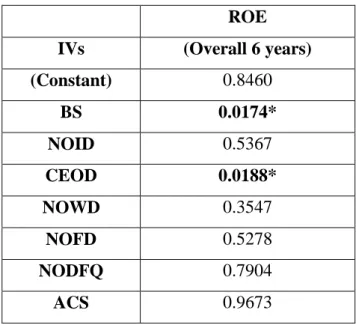
Summary of Test
Descriptive Analysis
Inferential Analysis
- Panel Data Analysis (6Years Analysis)
Discussion on Findings
Research by Kumar and Singh (2012) who conducted research on Indian non-financial companies has shown that independent directors have an insignificant effect on firm performance. Similarly, a study done by Mohd Nor, Shafee, & Samsuddin (2014) proved that there was no significant effect on firm performance with independence. Goh (2014) who studied family controlled firms also found that board independence has no effect on firm performance.
The findings showed that CEOD is statistically significant at the 5% level and affects ROE. This was supported by Goh (2014) whose findings showed that CEOD was not significant for firm performance in family firms. In addition, the findings showed that NOWD was not statistically significant at the 5% and 10% levels and has no effect on firm performance.
This was in line with the research of Farrell and Hersch (2005) who stated that having more women on boards does not have a significant impact on corporate performance. In addition, the findings showed that NODFQ was not statistically significant at the 5% and 10% levels and has no effect on firm performance. The analyzed findings showed that ACS is insignificant at 5% and 10% levels and has no effect on firm performance.
The research by Chandrasegaram et al shows the same results. 2013), where he proved that ACS has no effect on company performance.
Limitations in Research
However, most prior research has contradicted these findings, finding a significant effect between NODFQ and firm performance (Darmadi, 2011; Zeng & Xie, 2004). This was supported by Mak and Kusnadi (2005) who could not provide any effect between ACS and firm performance in Malaysia and Singapore.
Recommendations for Future Research
Conclusion
Impact of corporate governance on firm's financial performance (A comparative study of developed and non-developed markets). Journal of International Accounting, Auditing and Taxation Corporate Governance and Financial Constraints in Family Controlled Firms: Evidence from Malaysia. CEO duality, board independence, corporate governance and firm performance in family firms: Evidence from the Malaysian manufacturing industry.
European Journal of Economics, Finance and Administration. https://www.academia.edu/5808381/Corporate_Governance_and_Firm_. Corporate Governance and Performance in Hong Kong Established Family Firms: Evidence from the Hang Seng Composite Industry Index.

